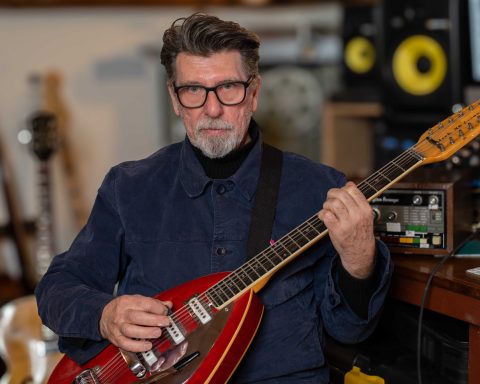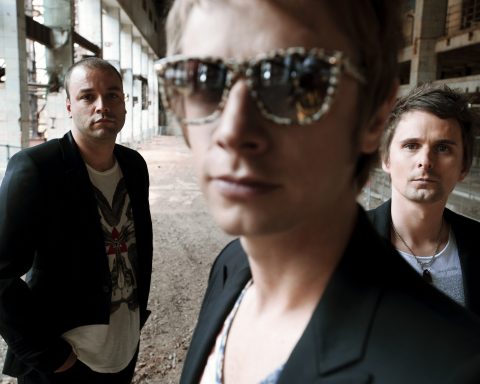The BOSS Katana is everywhere. Since 2016, this modern-classic amp range has become a strand of rock and roll DNA, helping professional and grass-roots players alike carve out the sound in their heads. A sonic chameleon boasting a library of onboard tones direct from BOSS’s industry-standard effects pedals, there’s no music-making scenario where the Katana doesn’t deliver. Stage, studio, rehearsal room, home production rig. It’s beside you.

Any Given Night
Any given night, any given stage, any given band—push through the crowd to the front row, look beyond the mic stands and monitors to the backline, and you’ll see it. A jet-black amplifier, LEDs glowing in the dark, with the iconic BOSS logo on the grill cloth, and below that, the Japanese hieroglyph warning things might get loud.
The story of this amp line seems like a textbook case of overnight success—until you drill a little deeper. Of course, BOSS’s status as the world leader in guitar effects has been set in stone since 1976’s CE-1 Chorus Ensemble. But what might appear to be a new amp operation is rooted in considerable heritage and pedigree.
“Our history is the foundation upon which we build our future. It's crucial to balance innovation with the wisdom and experience that fifty years have provided us.”
Yoshihiro Ikegami
A Sonic Revolution
No revolution occurs in a vacuum at BOSS; every innovation runs with a previous brainwave. As outgoing president Yoshihiro Ikegami explained last year during the company’s half-century anniversary celebrations: “Our history is the foundation upon which we build our future. It’s crucial to balance innovation with the wisdom and experience that fifty years have provided us.”
Let’s rewind. The conceptual roots of the guitar amplifier can be traced back to the 1920s, while the sector boomed in the 1960s with the towering valve-driven stacks created for rock and roll pioneers like Jimi Hendrix and Pete Townshend. By the following decade, however, the amp scene was ready for a fresh perspective, and it came not from London or California, but Japan.
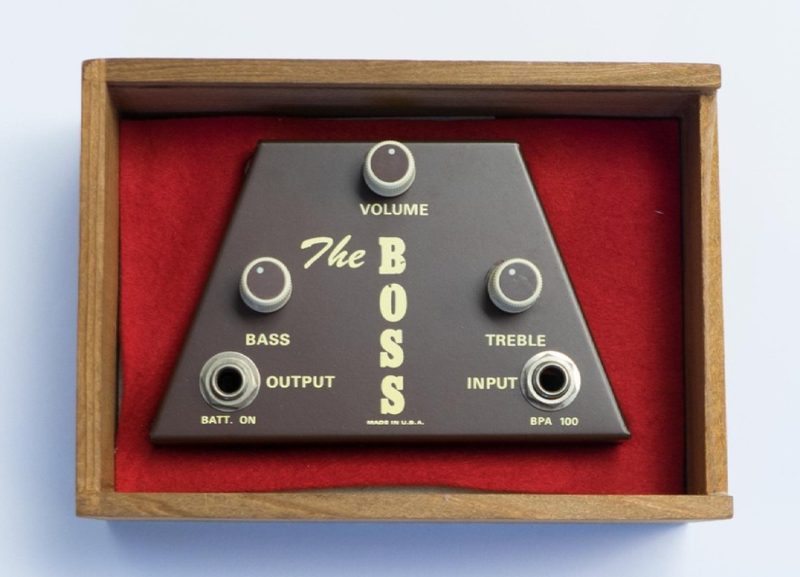
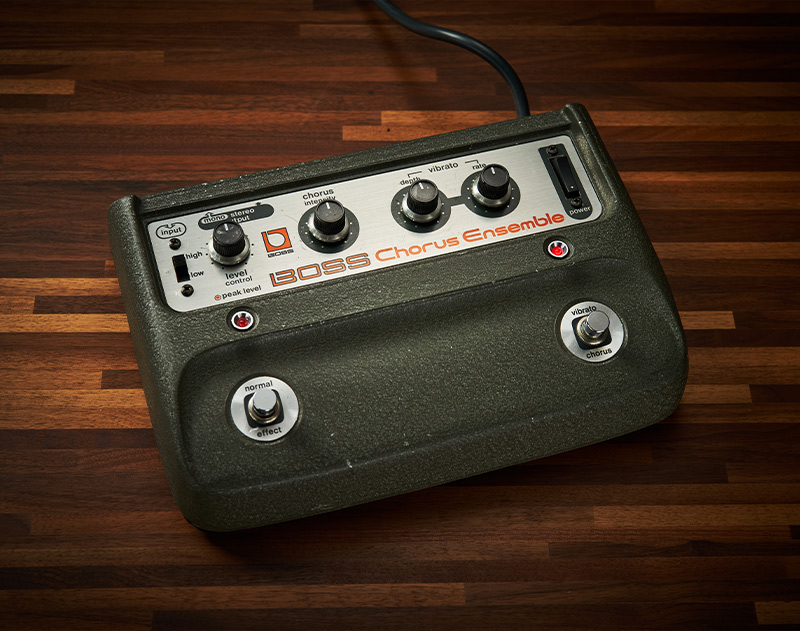
"Roland was founded in 1972 and launched its first classic product with 1974’s RE-201 Space Echo delay. JC-120 secured the fledgling brand’s immortality a year later."

Meet the JC-120
Roland was founded in 1972 and launched its first classic product with 1974’s RE-201 Space Echo delay. The JC-120 secured the fledgling brand’s immortality a year later. Today, the amp is a living legend; then, it was a wildcard. Employing solid state technology proved a masterstroke, with this 2×12 combo offering a glassy, pristine shimmer with none of the breakup associated with tubes.
The JC-120 might have been conceived for jazz players wanting to preserve the pure voice of their archtops (JC stands for Jazz Chorus). But that clean tone—sweetened by the near-mythical onboard stereo chorus—appeared in everyone’s catalogs, from Metallica and Limp Bizkit to Albert King and The Police.
A Legacy of Innovation
Explore these key milestones and innovations of Roland amplifier development over the years.
Jazz Chorus JC-120 (1975-Present): A landmark in amplifier design, the JC-120 is renowned for its pristine cleans and lush stereo chorus, establishing itself as a favorite among guitarists worldwide.
Cube Series (1978-Present): For Roland, the Cube series marked a foray into portable, versatile amplification. Over the years, the line evolved into a diverse range of compact amps for practice, recording, and small gigs.
Blues Cube Series (2016-Present): Harnessing the power of Tube Logic design, these amplifiers authentically replicate classic amps’ warm, dynamic response while offering modern reliability and versatility.
BOSS Katana Series (2016-Present): These versatile amps feature a wide range of tones and effects derived from BOSS expertise in effects pedals, coupled with cutting-edge Roland amplifier technology.
BOSS Nextone (2018-Present): Combining classic tube sound and feel with next-generation tonal diversity, the BOSS Nextone series offers selectable Class AB analog power amp types.
"Starting with the seminal classics of the late-’70s, including the OD-1 Overdrive, PH-1 Phaser, and SP-1 Spectrum, the next half-century saw a never-ending streak of innovation."
A BOSS is Born
Buoyed by the JC-120’s success, Roland’s amp innovations gathered pace, with the ultra-portable CUBE series launching in 1978 and evolving to attract cross-generational players from Randy Rhoads to Nita Strauss. But Roland wasn’t the only Japanese company pushing the envelope. BOSS emerged in 1973 as a sibling to Roland. The operations worked closely in the early years—even sharing engineers—yet each established its specialty.
For BOSS, that meant the best guitar pedals in the world. Starting with the seminal classics of the late-’70s, including the OD-1 Overdrive, PH-1 Phaser, and SP-1 Spectrum, the next half-century saw a never-ending streak of innovation. Today, the BOSS range runs to around 140 effects units, spanning from the DS-1 that inspired artists as diverse as Nirvana and The Cure to the DD Delay series heard in the studio catalogs of acts as varied as Steve Vai and Queens Of The Stone Age.

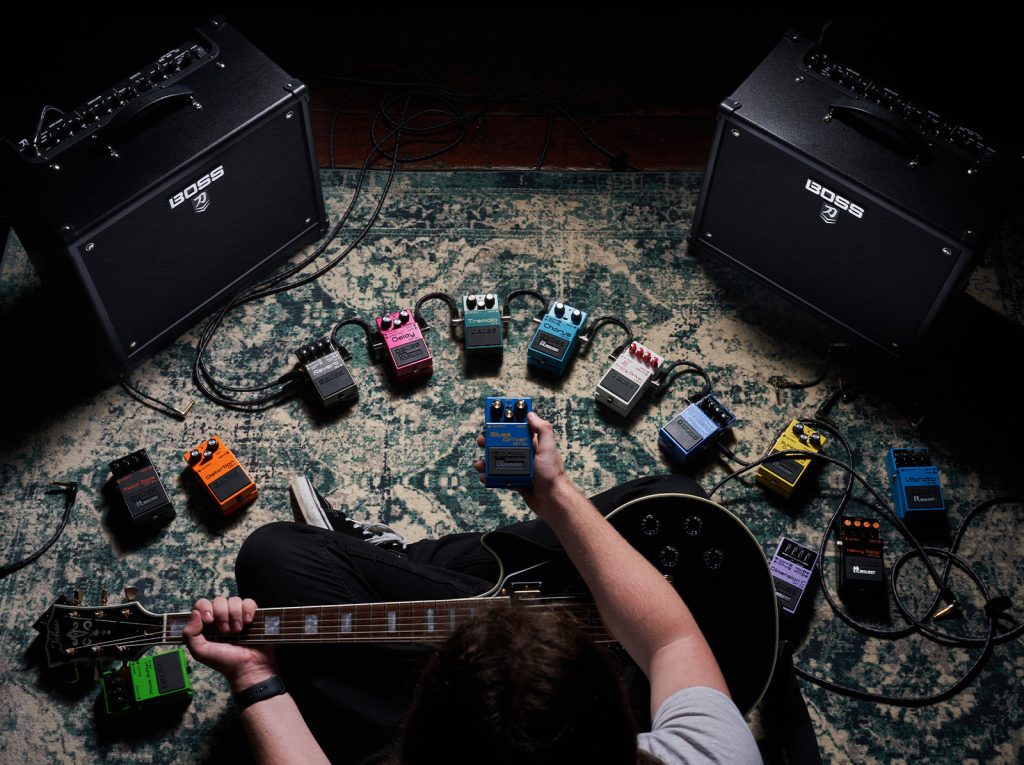
"Named after the traditional curved blades carried by Japan’s samurai warriors, Katana embodies those ancient swordsmith’s philosophies of precision, honor, and artistry."
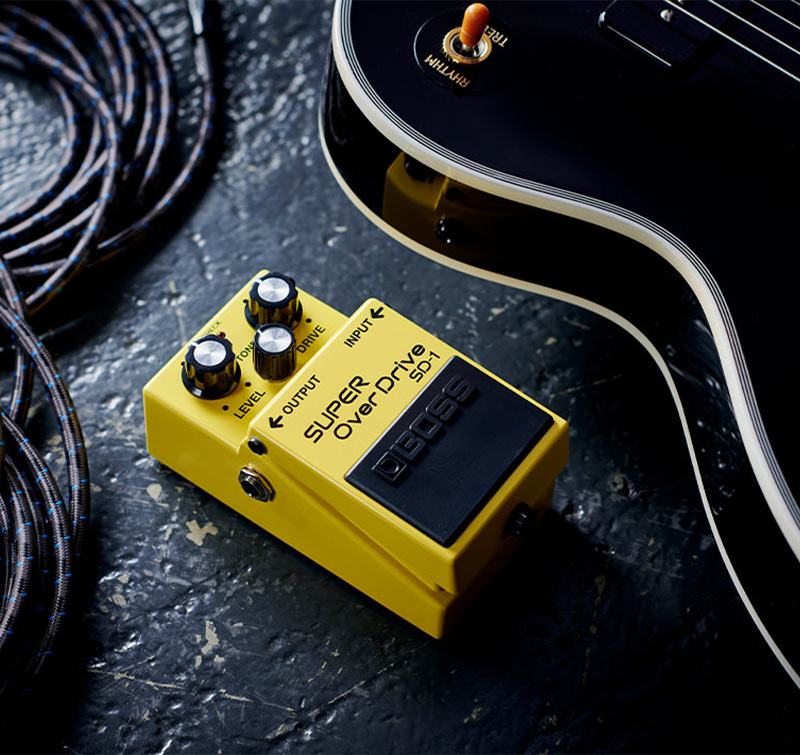
Concept to Creation
Most companies establish a niche and then stay in their lane. But moving into this new sector made perfect sense given BOSS’s shared history and pooled knowledge with Roland—not to mention the demand for a modern amp with pro-quality onboard effects. The Katana began as a concept before it left the drawing board.
This new amp series would nod to the tradition and history of the firm’s motherland, named after the traditional curved blades carried by Japan’s samurai warriors and embodying those ancient swordsmith’s philosophies of precision, honor, and artistry. Just as important, the Katana has lived by BOSS’s calling cards since 1973: tough and roadworthy, intuitive in operation, and affordable for working musicians.
The New Breed
The first wave of Katana amps touched down in September 2016—in the form of the compact Katana-50, higher-output Katana-100, and dual speaker Katana-100/212 combos, plus the standalone 100-watt Katana-Head. Lean, mean, and keenly priced, these incoming legends emphatically delivered on their promise to supply “the ultimate rock sound.”
The Katana was undoubtedly a trailblazer, but true to BOSS’s philosophy, it stood on the shoulders of another groundbreaking amp. Launched earlier that same year, BOSS’s boutique four-channel Waza Head and 212 cabinet had wowed the scene with Tube Logic design that delivered characterful response and unprecedented scope for revoicing. “It’s an attractive alternative to a tube head,” wrote Guitar World’s Chris Gill, “ready for the biggest stages.”

"From metallers to bluesmen, the first players to power up a Katana discovered even more head-spinning sonic options."

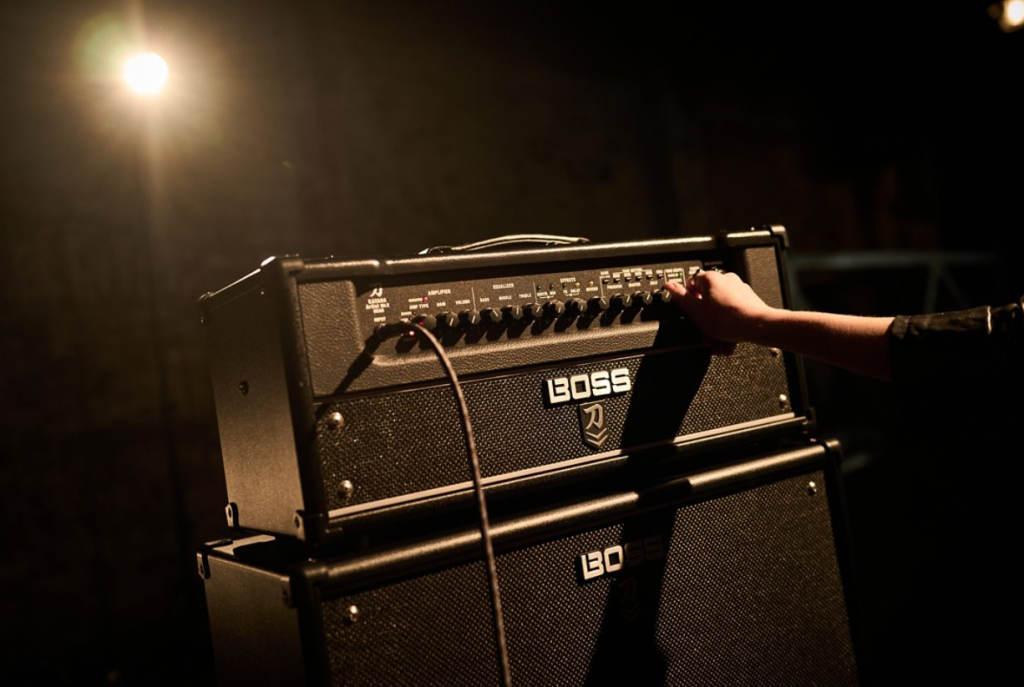
Options upon Options
From metallers to bluesmen, the first players to power up a Katana discovered even more head-spinning sonic options. Turning the Amp Type dial between the Clean, Crunch, Lead, Acoustic, and Brown settings announced the interplay between responsive, alive-in-your-hands Tube Logic design and a Class A/B analog power amp that pushed all that sonic character through custom-designed speakers. Meanwhile, unlike an old-school valve amp, the Katana’s Variable Power Control lets players dig out those ready-to-burst rock tones at practical volume levels.
“The Katana’s core amp sounds are impressively authentic, from fat, juicy blackface-inspired cleans to responsive tweed-based crunches that are great fun for blues and classic rock,” wrote MusicRadar’s Nick Guppy of the Katana-100/212, “while the Lead and Brown amp models will satisfy any gain fiend’s desire.”
"Each Katana felt like a blank canvas, effectively giving every last one of the brand’s millions of owners their custom signature amp, tuned for anything from creamy jazz to saturated thrash-metal."
The Growing Effect
Nor had BOSS wasted its half-century’s expertise as an effects pioneer. Even in those first incarnations, each Katana amp doubled as a world-class pedalboard, giving integrated access to 55 signature BOSS effects (a figure that keeps growing).
Players could select three effects simultaneously using intuitive dashboard controls, save custom setups to onboard memory, and craft unique sounds using free BOSS Tone Studio editor software. The result was that each Katana felt like a blank canvas, effectively giving every last one of the brand’s millions of owners their custom signature amp, tuned for anything from creamy jazz to saturated thrash-metal.

"From day one, Katana sales took off like a rocket, while players across the genre gamut began bending this new wave of amps to their will."
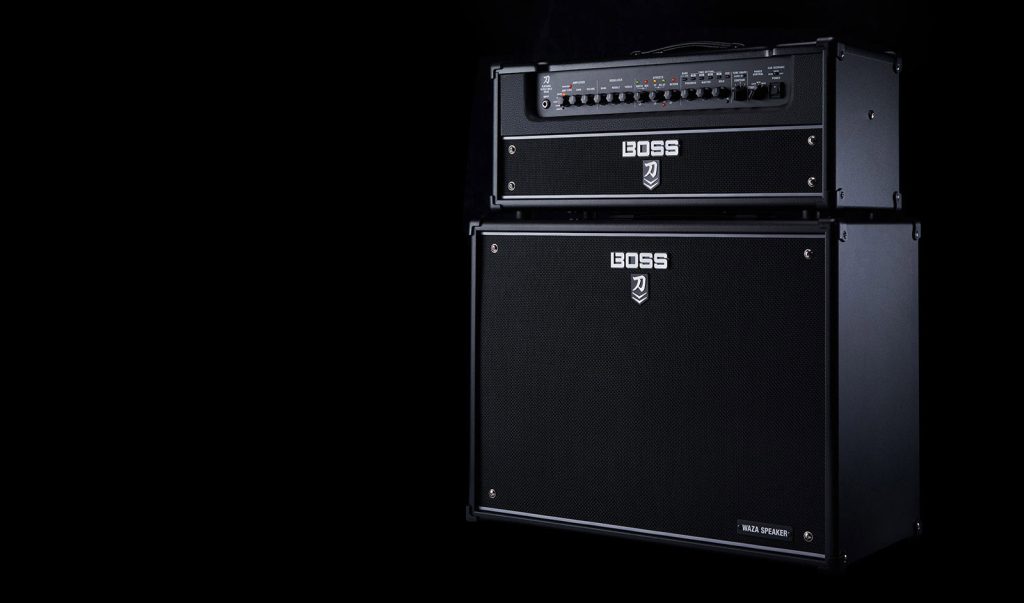

Immediate Praise
From day one, Katana sales took off like a rocket, while players across the genre gamut began bending this new wave of amps to their will. The response, meanwhile, spurred BOSS engineers to raise the bar higher still. Having defied practice amp expectations with 2017’s Katana-Mini (a triple-voiced pocket rocket), the following year’s Katana-Artist offered a pro-level tone, speaker, and cabinet spec that drew in name players like Andy James, Ola Englund, and YouTuber and FrogLeap guitarist Rabea Massaad.
“The Katana Artist is a really impressive addition to the range,” Massaad said of that flagship model. “For all of those guys wanting to gig and keep everything in one box—whether it be all your effects, the functionality, the different tones—this is a great option. I can’t fault it. But then, I couldn’t fault the other Katana amps.”
“I first plugged into a Katana Artist at the John Petrucci Guitar Universe camp and was instantly a fan,” adds James, who last year released the acclaimed solo album Fury From Above and can be heard on Five Finger Death Punch’s recent single with DMX, “This Is The Way.” “Very easy to dial in a great tone and surprisingly expressive for a modeling software amp. That, coupled with the speakers they use, is a winning combination in any situation.”
"2018 also tore up the blueprint with the Katana-Air: the first fully wireless guitar amp system."
Floating on Air
And if the Artist beat the established amp brands for tone, then 2018 also tore up the blueprint with the Katana-Air: the first fully wireless guitar amp system, offering the range’s amp models and app connectivity in a desktop format powered by either mains electricity or AA battery. That original model was so good it remains in production to this day—alongside the Katana-Air EX, uprated with 35-watt output and 5-inch speakers, plus stereo sound and line outs for live. “If you’re looking for a desktop amp that crosses over into serious recording, rehearsals, and more,” wrote Nick Guppy, “the Katana-Air EX is an ideal choice.”
What began as a revolution has settled into evolution. Scan the updated MkII Katana lineup launched in 2019, and you’ll still see the defining features that built the legend, including the five core Amp Type characters and Variable Power Control dial.
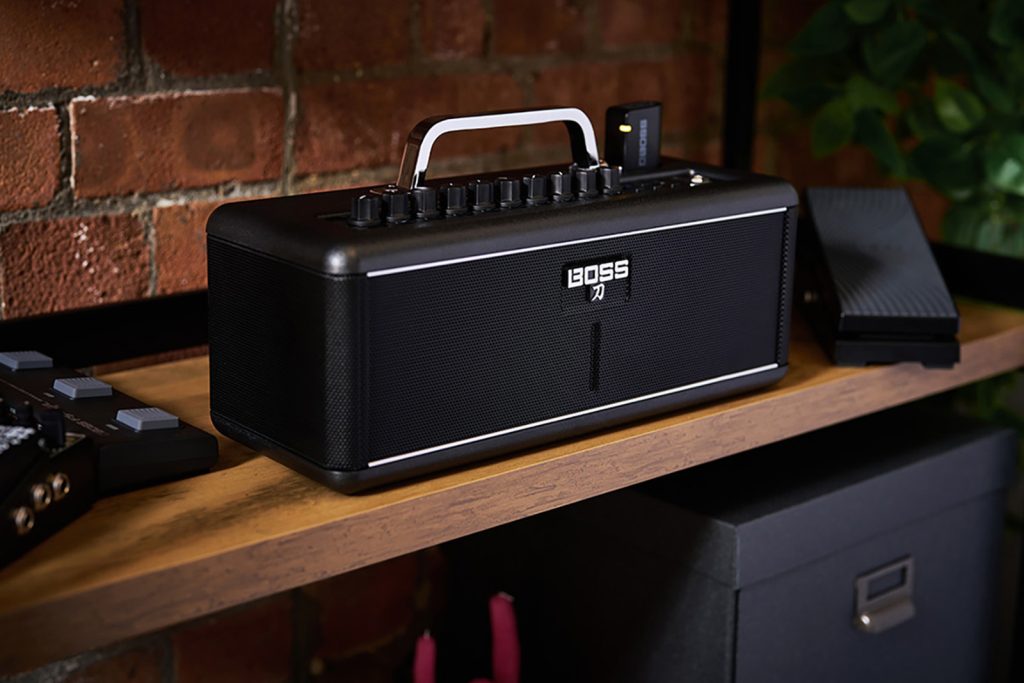

Evolution of the BOSS Katana Series
Since its debut, the BOSS Katana has undergone several notable iterations. Here’s a timeline of the series.
2016 – Launch of First Katana: Born of the Waza amp development process, the original Katana lineup consisted of three combo amplifiers and an amplifier head. The Katana-50, Katana-100, Katana-100/212, and the 100-watt Katana-Head.
2017 – Katana Mini: Producing rich, full sound from a modest footprint, the amp weighs just under three pounds and sits easily on a tabletop or shelf. It’s convenient to grab the Katana-Mini and travel to all types of indoor and outdoor destinations.
2018 – Katana-Air: BOSS announces the Katana-Air, the world’s first totally wireless guitar amplifier. Compact and battery-powered, the Katana-Air features low-latency wireless guitar technology developed by BOSS and a custom wireless transmitter.
2018 – Katana Artist: The Katana-Artist took the line’s performance to new heights with tone, speaker, and cabinet enhancements tailored for pro guitarists. The 100-watt Katana-Artist combo featured a newly developed cabinet design with front-facing controls and a premium Waza 12-inch speaker.
2019 – Katana MkII: Katana MkII models boast new variations and voices optimized to complement the five amp characters of the original series plus five simultaneous effects categories. Independent Booster, Mod, FX, Delay, and Reverb sections have three variations each, providing 15 ready-to-play effects.
2020 – Katana Artist MkII: In 2020, the flagship 100-watt Katana-Artist combo received the MkII treatment with more tone variations, expanded effects, and other core updates. Some powerful new hardware features include a Contour control, solo boost, external dual amp control, and more.
2022 – Katana Bass Models: In 2022, BOSS unveiled the Katana-110 Bass and Katana-210 Bass amplifiers, the first bass guitar models in the acclaimed Katana amplifier lineup.
2023 – Three New Models: The Katana-50 MkII EX is an expanded version of the entry-level Katana-50 MkII, and the Katana-Artist MkII Head provides the premium sound and features of the Katana-Artist MkII combo in a 100-watt amplifier head. Finally, the Katana Cabinet 212 Waza is a 2×12 speaker cabinet loaded with custom Waza speakers.
2024 – Katana-500 Bass Head: This professional 500-watt bass head features refined preamp circuitry, a newly developed Class D power amp, and innovative Cab Resonance calibration.
2024 – Katana Gen 3: The latest iteration of the globally popular line adds Pushed Amp Type and a host of other features, cementing the future of Katana.
"Each generation will get the Katana it demands, with the cutting-edge features to thrive on the music scene of that moment."
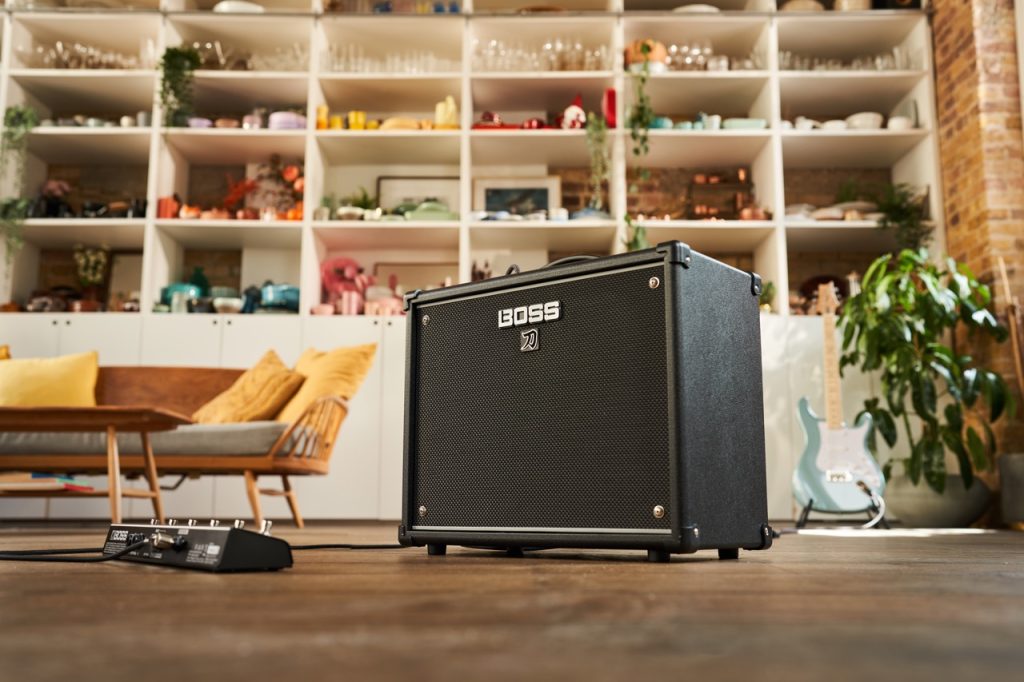
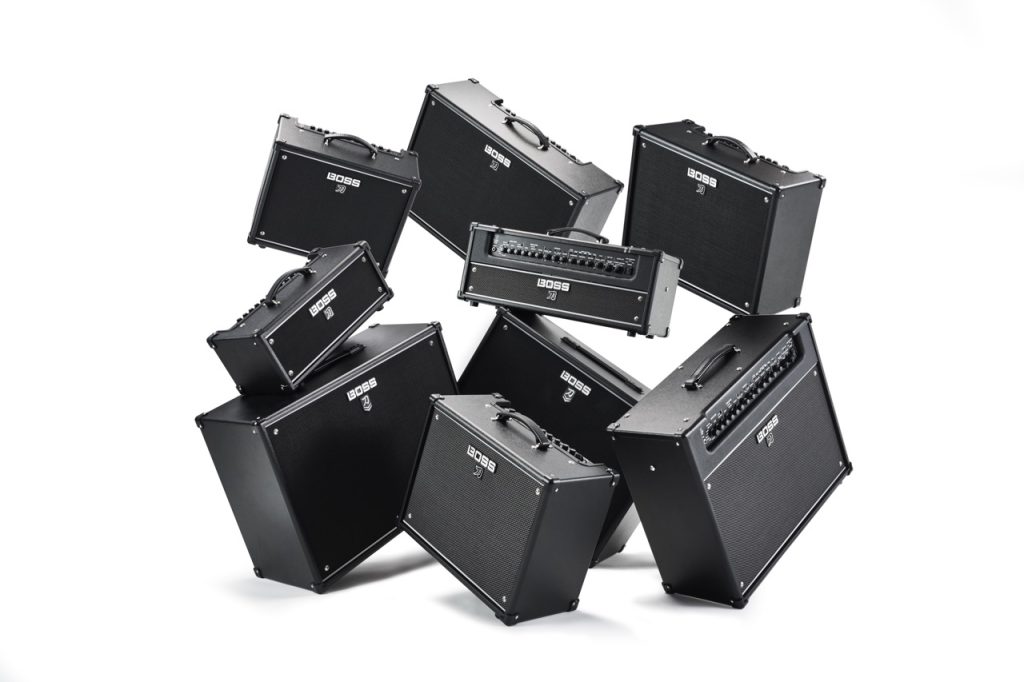

Powerful and Expansive
Look closer, though, and you’ll realize all this technology constantly evolves. From newly voiced amp variations, expanded effects, updated BOSS Tone Studio software, and GA-FC footswitch support to Power Amp In jacks that transform your Katana into a powered cabinet for a preamp pedal. Plus, the Stereo Expand feature lets players link multiple Katanas for a wall of stereo sound.
Katana Gen 3
Building on the BOSS tradition of engineering excellence, the new Katana Gen 3 series is the latest stage in the amplifier line’s evolution. The new Pushed Amp Type adds a fresh character to the existing Katana sound options, while the popular Brown has been further refined. In addition, the Katana Gen 3 series boasts USB-C connectivity and expression pedal jacks, and individual models have other exciting features.
The Next Chapter
It’s quite a backstory. Some brands would stick with the formula and soak up the acclaim. Still, it’s all about the next chapter regarding the BOSS Katana, as you’d expect from a firm that lives by the motto “We design the future.” And as you’d expect from a firm that lives by the motto “we design the future.” With this forward-thinking amp series forever in flux, each generation will get the Katana it demands, with the cutting-edge features to thrive on the music scene of that moment. But wherever Katana goes next, its standards will endure like samurai steel. “There’s a reason why the BOSS Katana features on so many ‘best amplifier’ lists,” wrote MusicRadar. “It’s simply brilliant.”



